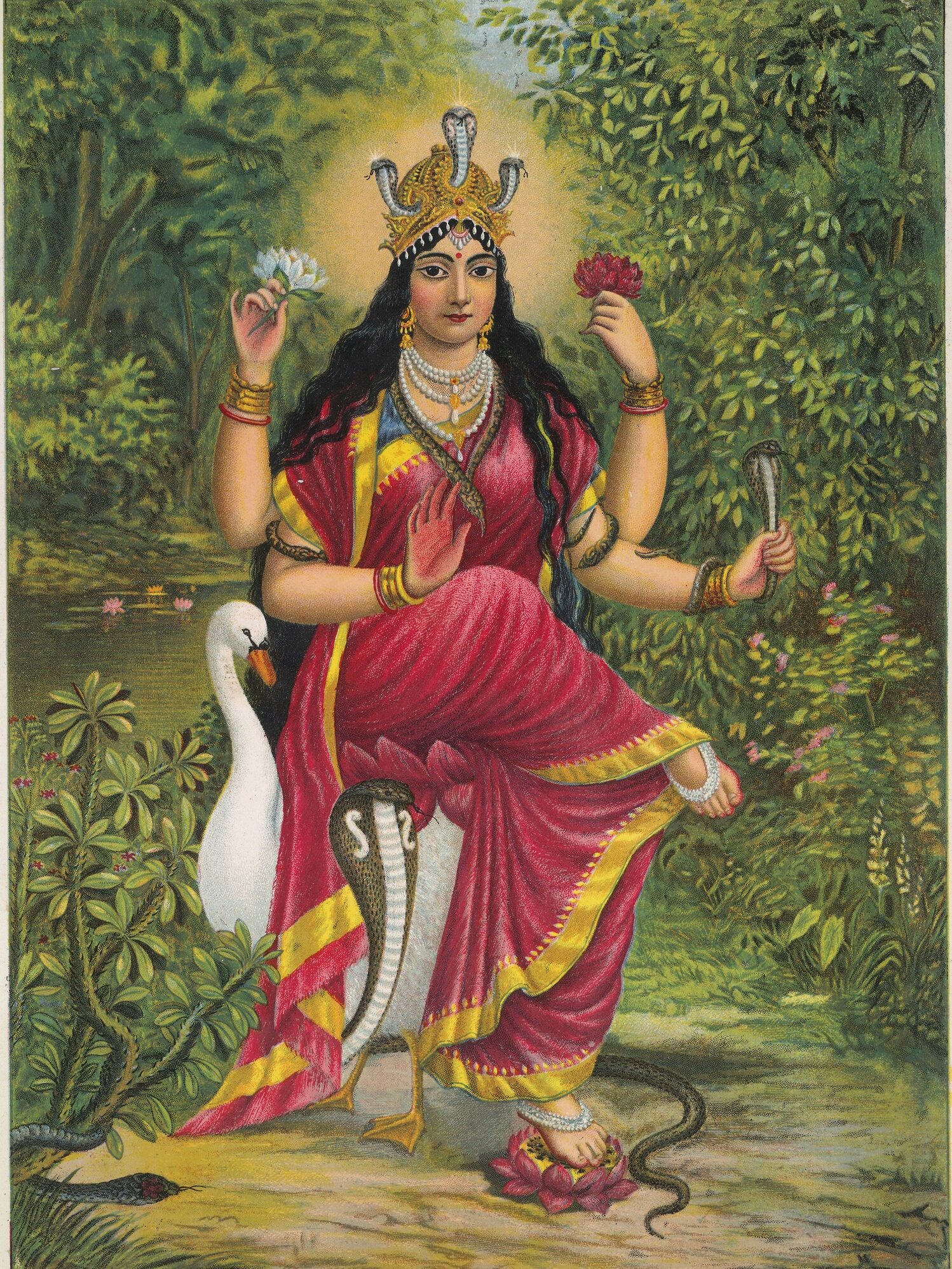Long before the Aryans shaped India’s religious landscape, snake worship was deeply rooted in indigenous traditions. Marisa Goddess, also known as Pathma Goddess, is venerated across Bengal, Maharashtra, southern India, and Nepal. Her divine seat, symbolized by a lotus, signifies purity and spiritual ascension.
During Naga Panchami, devotees honor her by offering Euphorbia neriifolia, known in Thailand as “Tonsomchao,” a cactus-like sacred plant associated with her energy. The festival falls on the 5th lunar day of Shravan (July–August), a time when plowing, cutting grass, or disturbing the earth is strictly forbidden, lest it disrupt the unseen serpent realms.
A key ritual includes offering fresh milk to snakes—an act inspired by an ancient tale of a kind-hearted woman who nurtured serpents, earning Marisa Goddess’s divine favor. Alongside her, celestial serpents like Ananta, Vasuki, Taxak, Karkotaka, and Pingala are also venerated.

The Feud Between Marisa Goddess and Shiva God’s Devotee
According to legend, Marisa Goddess was either the foster daughter of Shiva God or, in some versions, the child of the Pravati Goddess. This made her an outsider among the celestial pantheon. Determined to earn her place in divine worship, she descended to the mortal world alongside Neta Devi, another daughter of Shiva God, seeking human devotion.
But there was a problem—Chand Sadagar, a wealthy merchant, was unwavering in his devotion to Shiva God. He chanted only Om Namah Shivaya, refusing to acknowledge Marisa Goddess. Her attempts to win him over failed, leading to a dramatic divine showdown.
The Trials of Chand Sadagar
When persuasion didn’t work, Marisa Goddess resorted to harsher measures. She unleashed serpents to destroy Chand Sadagar’s grand gardens. However, his friend Shankar used sacred spells to revive the land, countering her divine force. Frustrated, Marisa Goddess sent a deadly serpent to take Shankar’s life, ensuring no one could undo her wrath. Then, one by one, Chand Sadagar’s six sons met their demise at the fangs of her serpents. Before each strike, she whispered a warning: “Bow before me.” Yet, the merchant remained resolute.
Even when his ship was wrecked by Marisa Goddess’s stormy magic, leaving him penniless, he refused to waver. Pravati Goddess intervened briefly to protect him, but when Marisa Goddess appealed to Shiva God, he commanded Pravati Goddess to step aside. The merchant was left to face his fate.
A Twist of Fate and the Century of Love Connection
Marisa Goddess devised a final plan. She arranged for two celestial beings to be reborn—one as Chand Sadagar’s son Laxminar, and the other as Pelula, the daughter of his merchant friend. Their fates were entwined in a grand marriage, but an ominous prophecy foretold that Laxminar would die on his wedding night.
True to the prophecy, he perished, and Pelula, heartbroken, placed his body on a floating raft, praying for a miracle. For six months, she drifted downriver, seeking a healer. Eventually, she reached Neta Devi, who, after witnessing Pelula’s unwavering devotion, agreed to intervene.
Neta Devi secured the divine nectar from the heavens, but there was a catch—Laxminar could only be revived if Chand Sadagar finally acknowledged Marisa Goddess. With everything at stake, the merchant reluctantly complied, albeit with a half-hearted gesture—offering a prayer with his left hand while looking away.
It was enough. Marisa Goddess was appeased. She restored everything Chand Sadagar had lost—his sons, his wealth, and his beloved garden. His friend Shankar was also revived, and Laxminar was granted a second life.
Marisa Goddess: The Serpent Queen
Beyond her fearsome trials, Marisa Goddess is renowned for her striking beauty. With a third eye on her forehead, a white swan as her celestial mount, and serpents coiling in her hands, she remains a powerful force in Hindu mythology.
The Chinese Connection: Nüwa and the Century of Love Legend
Before we wrap up, let’s touch upon an ancient Chinese counterpart—the Nüwa Goddess. Those who followed the hit TV drama Century of Love might recognize her tale. In Chinese mythology, Nüwa and her consort Fuxi shared serpentine lower bodies, signifying their divine origins. While Fuxi taught agriculture and survival, Nüwa molded humans from clay, breathing life into the first people.
When the sky cracked, unleashing chaos, she melted five-colored stones for 49 days to seal the rift, saving humanity from destruction. Following Fuxi’s passing, she ascended as the first female emperor in mythic history, revered for her wisdom and compassion.
Where to Worship Marisa Goddess and Nüwa
For those drawn to the mystique of snake worship, you can pay homage to Marisa Goddess at select Hindu temples, while Nüwa devotees can visit:
- Najasa Taizu Shrine, Ang Sila
- One Guan Yin Temple, Wat Chanasongkram, Bangkok
Nai Mu has merely scratched the surface of these legends—there’s always more to uncover in the mystical world of gods and serpents. Stay tuned for more fascinating tales from Ticy City!